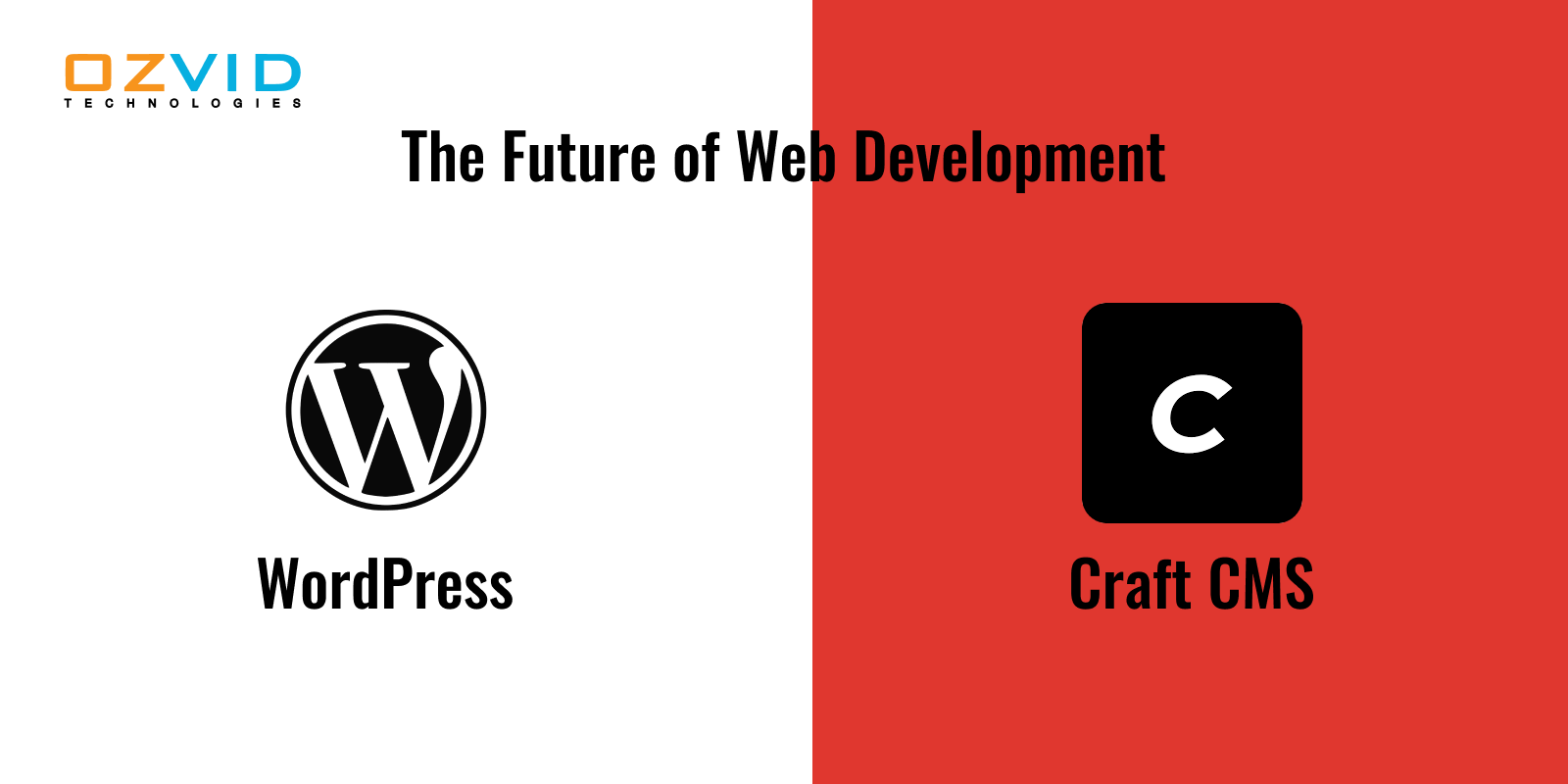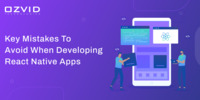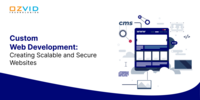- May 02, 2025
- Web Development
- 11108
Share this post on:

In the ever-evolving web development landscape, content management systems (CMS) are crucial in shaping how websites are built, managed, and maintained. Two prominent players in this field are Craft CMS and WordPress. While WordPress has long been the dominant force in the CMS market, Craft CMS has been gaining traction among developers and businesses alike. This blog post will explore the strengths, weaknesses, and potential future impact of both systems on web development.
Key Takeaways:
- Craft CMS is a developer-focused platform, ideal for custom, high-performance websites with flexible content structures.
- WordPress excels in ease of use, vast plugin ecosystem, and community support, making it perfect for smaller projects or blogs.
- Both platforms are adapting to headless CMS, API-first, and performance optimization trends.
- Your CMS choice depends on project complexity, scalability, and available resources.
Introduction to Craft CMS and WordPress
Craft CMS
Craft CMS is a content-first CMS that prioritizes flexibility and customization. Launched in 2013 by Pixel & Tonic, Craft has quickly gained a reputation for its clean, intuitive interface and powerful development capabilities. It's built on the Yii PHP framework and emphasizes a modular approach to web development.
WordPress
WordPress, on the other hand, needs little introduction. Originally launched in 2003 as a blogging platform, it has since evolved into the world's most popular CMS, powering over 40% of all websites on the internet. WordPress is known for its extensive plugin ecosystem, a wide range of themes, and a large community of developers and users.
Key Differences
1. Philosophy and Approach
Craft CMS takes a content-first approach, focusing on providing developers with the tools to build custom, tailored solutions for their clients. It doesn't impose a specific structure or layout on your content, allowing for greater flexibility in design and functionality.
WordPress, while also flexible, comes with a more defined structure out of the box. It's built around the concept of posts and pages, which can be limiting for some projects but provides a familiar starting point for many users.
2. Learning Curve and Ease of Use
For end-users, WordPress often has a gentler learning curve. Its widespread use means that many people are already familiar with its interface and basic functionality. Additionally, the abundance of plugins and themes allows users to add features and change designs with relative ease.
Craft CMS has a steeper learning curve, especially for non-technical users. However, its clean, intuitive interface can be easier to work with once users become familiar with it. For developers, Craft's learning curve can be more rewarding, as it encourages best practices and clean code from the start.
3. Customization and Flexibility
Craft CMS excels in customization. Its modular architecture and flexible content modeling allow developers to create precisely what they need without unnecessary bloat. Craft's powerful templating system, based on Twig, gives developers fine-grained control over how content is displayed.
WordPress offers customization through its theme and plugin system. While this can be powerful, it can also lead to conflicts and performance issues when multiple plugins are used. Advanced customization in WordPress often requires more workarounds and can result in less clean code compared to Craft.
4. Performance and Scalability
Out of the box, Craft CMS tends to perform better than WordPress. Its lean codebase and efficient database queries contribute to faster load times. Craft also handles large amounts of content and high traffic more gracefully without additional optimization.
WordPress can struggle with performance, especially on larger sites or with many plugins installed. However, with proper optimization and caching, WordPress can be made to perform well. The challenge is that this often requires additional expertise and resources.
5. Security
Craft CMS has a strong focus on security. Its smaller market share means it's less of a target for hackers, and its codebase is generally considered more secure. Regular updates and a proactive approach to patching vulnerabilities contribute to its robust security profile.
WordPress, being the most popular CMS, is a frequent target for attacks. While the core WordPress software is secure, the vast ecosystem of themes and plugins can introduce vulnerabilities. Proper security measures are crucial for WordPress sites, and regular updates are essential.
6. Cost
WordPress is open-source and free to use, which contributes to its popularity. However, premium themes, plugins, and hosting can add to the cost.
Craft CMS has a licensing fee for commercial use, which can be a barrier for some projects. However, this cost often pays for itself in terms of reduced development time and ongoing maintenance.
The Future of Web Development
As we look to the future of web development, several trends are likely to shape the landscape:
1. Headless CMS and API-First Approaches
Craft CMS and WordPress are adapting to the growing demand for headless CMS solutions. Craft's content-first approach makes it well-suited for headless implementations, while WordPress is evolving with projects like the REST API and GraphQL API.
Craft CMS has an advantage in this area due to its flexible content modeling and clean API. It's easier to use Craft as a headless CMS out of the box, whereas WordPress often requires additional setup and plugins.
2. Performance and Core Web Vitals
As Google continues to emphasize page speed and user experience through metrics like Core Web Vitals, CMSs that prioritize performance will have an advantage. Craft's lean architecture gives it an edge in this area, while WordPress will need to focus on optimization to keep up.
3. Developer Experience and Modern Workflows
The future of web development will likely see a continued emphasis on improved developer experiences and modern workflows. Craft CMS, with its clean codebase and support for tools like Composer, is well-positioned in this regard. WordPress is making strides with projects like Gutenberg, but it carries the weight of backward compatibility.
4. Accessibility and Inclusivity
Both Craft CMS and WordPress are likely to increase their focus on accessibility and inclusive design. WordPress has made significant strides in this area, while Craft has room for improvement but is actively working on enhancing accessibility features.
5. AI and Machine Learning Integration
As AI and machine learning become more prevalent in web development, both CMSs will likely incorporate these technologies. WordPress's large ecosystem may give it an advantage in terms of AI plugins and integrations, while Craft's flexibility could allow for more customized AI implementations.
Which CMS is Right for You?
Choosing between Craft CMS and WordPress depends on your specific needs, resources, and goals. Here are some scenarios where each CMS might be the better choice:
Choose Craft CMS if:
• You're building a custom, complex website with unique content structures
• Performance and scalability are top priorities
• You have experienced developers who value clean code
• You're working on a headless or API-first project
• Your client needs a user-friendly interface for content management
Choose WordPress if:
• You're building a blog or simple website
• It would help if you leveraged a wide range of existing plugins and themes
• Your team or client is already familiar with WordPress
• You're working with a limited budget
• You need multilingual capabilities out of the box
The Future Landscape
As we look to the future, it's unlikely that either Craft CMS or WordPress will completely dominate the market. Instead, we're likely to see a diversification of CMS solutions catering to different needs and use cases.
WordPress is a popular choice for small to medium-sized websites, blogs, and e-commerce sites. Its vast ecosystem and familiarity make it an accessible option for many users and developers.
Craft CMS, on the other hand, is positioned to grow in popularity among developers and agencies working on custom, high-performance websites. Its flexibility and clean architecture make it well-suited for headless implementations and complex content structures.
We may also see increased specialization, with WordPress focusing on user-friendly solutions for small businesses and bloggers, while Craft CMS caters to developers and larger organizations needing custom solutions.
Conclusion
Both Craft CMS and WordPress have their place in the future of web development. WordPress's massive ecosystem and user base ensure its continued relevance, especially for smaller projects and users who prioritize ease of use. Craft CMS, with a focus on flexibility, performance, and developer experience, is well-positioned to grow, particularly in the realm of custom, high-performance websites.
The choice between Craft CMS and WordPress should be based on the specific needs of each project, the available resources, and the long-term goals of the website. As the web continues to evolve, both CMSs will need to adapt to new technologies and user expectations.
Ultimately, the future of web development is diverse, with different tools catering to various needs. By understanding the strengths and weaknesses of platforms like Craft CMS and WordPress, developers, and businesses can make informed decisions that set them up for success in the ever-changing digital landscape. So, if you are looking for a web app development company to enhance your business, look no further than OZVID Technologies. Contact us to learn more.
FAQ's
1. What is the difference between Craft CMS and WordPress?
Craft CMS and WordPress are both popular content management systems (CMS), but they cater to different needs. WordPress is highly user-friendly, making it ideal for beginners and those looking to quickly set up websites with a wide range of plugins and themes. It is known for its flexibility and large community support. Craft CMS, on the other hand, is more developer-focused, offering a more customizable and streamlined approach to web development. While WordPress excels at scalability and ease of use, Craft CMS is preferred for building complex, high-performance websites with precise control over content structures and design.
2. Which CMS is better for SEO—Craft CMS or WordPress?
Both Craft CMS and WordPress offer solid SEO capabilities, but WordPress has a more extensive range of SEO plugins (like Yoast SEO) that make optimization easier for beginners. WordPress also has a large variety of themes and plugins that are SEO-friendly right out of the box. Craft CMS, while not as plugin-heavy, provides developers with a more tailored SEO solution. Its flexibility allows for a custom-built SEO strategy that can be better optimized for specific needs, especially for websites with complex structures or unique content management requirements. Overall, Craft CMS offers better SEO control, while WordPress makes SEO more accessible for everyone.
3. Which CMS is more suited for large-scale websites—Craft CMS or WordPress?
For large-scale websites, Craft CMS tends to be the better choice due to its ability to handle complex, custom structures and deliver superior performance. Unlike WordPress, which can slow down as websites grow due to its reliance on plugins and themes, Craft CMS allows for a more optimized and efficient structure that ensures faster load times and better scalability. Craft’s flexibility and ability to manage large amounts of content without compromising on speed or user experience make it a strong contender for large, enterprise-level websites. WordPress, however, can still handle large-scale websites with the right optimizations, but it may require more resources and careful management of plugins and themes.
4. What is the future of Craft CMS vs WordPress in web development?
Both Craft CMS and WordPress are poised to remain relevant in the future of web development, but each will cater to different markets. WordPress will continue to dominate the general website and blogging space due to its ease of use, large plugin ecosystem, and extensive support. It will also benefit from continuous updates and community-driven improvements. Craft CMS, on the other hand, will likely grow in popularity among developers who need highly customized, flexible, and performance-optimized websites. Its developer-focused approach positions it as an excellent choice for businesses looking for tailored solutions and superior content management control. As web development evolves, both platforms will play vital roles, with WordPress serving the mass market and Craft CMS catering to niche, high-performance projects.










